Want to make your plot bright and very unusual, put on the flower beds Ryabchiki. If you immediately thought about the bird - a ripple of ordinary, then you were mistaken. After all, these are flowers that can have the shape of unusual palm trees, bright chess bells with flowers-glasses. Plants are perfectly suitable for various garden compositions. At the same time, the process of cultivation itself will not be much difficulty, even a beginner in horticulture will cope with it. Flowering summer flowerbeds with ripples are the perfect decoration for a plot and garden.
In this article, we will consider more details on the features and description of Ryabchikov, as well as tell about the most popular and common types and varieties of this blooming plant. We note important nuances of agrotechnika cultivation.
Features and Description of Ryabchikov
Rybokchiki are grassy bulbous perennial plants that belong to the Lily Family. These flowers are primructures in our gardens that adorn the plot with bright colors in the first months of spring. The flower has another scientific name - freethylene. The natural habitat of this plant is the territory with a temperate climate, and more specifically North America, Europe and Asia. In Russia, this flowering plant is also very popular, because its cultivation is not particularly difficult. In the 16-19 century, this plant was very popular among the Italian aristocracy. Now Ryabchiki is used to decorate the flower beds of various shapes.
There are several stories of the name of the name of this flower. On the territory of Russia, the Ryabchik was called for the similarity of its coloring with a motley plumage of Ryabchikov - wild birds. Flictillary translated from Latin denotes a "glass" or "glass". This name is associated with the shape of the colors-bells. There is another name for this plant - the "chessboard", which is associated with the colors of one of the species of the row - chess. Painting of the petals of this plant resembles a chessboard with purple-white spots.
Description of Ryabchikov:
- Ryabikov are perennial bulbous plants.
- With its appearance, this plant resembles a palm tree, especially one of his species is a ripper of the imperial.
- The ripper is multiplied mainly with bulbs, which consist of several rather large scales. Due to the fact that the bulbs remain wintering on the garden, the scales are updated every year. The peculiarity of the bulbs in Ryabchikov - they are very gentle due to the absence of protective peel.
- In bulbs, kidneys can be laid, from which new bulbs appear.
- On average, the rims are necessary once every 2-4 years.
- Stems appear from the bulbs, which in different types of row are of different heights. On average, the height of the row is 0.5-1 m.
- The leaves of the row have an oblong landslide form or a narrow zero. On color they are dark green or light green.
- On the stems of the leaves are located in small quantities.
- Ryabolic flowers can grow singly or be collected by several pieces into umbrella or buggy inflorescences.
- The form of flowers resemble a large glass or bell of various colors: yellow, orange, red, purple, motley, with chess color.
- Each flower consists of 6 petals, inside which six stamens and pestle are placed.
- Flowers are located on the stem on the top, slightly drooping.
- rybokchiki have a very specific smell that scares various rodents: rats, earthters, mice, moles.
- Blossom starts in mid-May and lasts for 20 days.
- After the color of the colors of the row on the stems, fruits appear, which have the shape of a winged or loony box with a large number of seeds.
Variety of species and varieties of a row
In total, there are more than 150 species of this plant in nature, but only a small part of them is widely used.
Ryabik chess
- Cultivated in gardens from 1572 years.
- It is a low-volume plant that can grow only by 35 cm.
- Usually, the row has many colors-bells, and a chess dropper flourishes only one bright "glass", less than two.
- Flowers bloom on the top of the stem hanging down.
- Named this type due to coloring colors: she resembles a chessboard. All petals are painted in purple brown tones with blond stains.
- The main feature of a chess packer is his unpretentiousness.
- This type of plant has its own varieties that differ in color.
The most popular chess drawber varieties:
- Ryabik chess "Alba". It features white colorful colors, in height also a low-speed plant.
- Ryabik chess "Aphrodite". Also the shape of a row with a white colors.
- Ryabik "Artemis". Flowers have an unusual shade, purple with green.
- Ryabik "Jupiter". Very beautiful view of a chess rink, which blooms dark red flowers.
Ryabchik Imperial
- The homeland of one of the most beautiful and spectacular colors, the Ryabik of the Imperial, is Turkey, from where he came to the territory of Europe in 1580.
- In the people, this plant is often called the "paradise tree".
- A fairly tall plant, which can be 80-100 cm in height.
- The bulbs of this type of row have a specific unpleasant smell.
- With its appearance, the ate is an imperial or royal look like an exotic palm tree.
- The leaves of this plant are growing at the earth itself, as well as on the highest, forming a crown, from which flowers grow up.
- Flowers grow in large quantities at the highest plant.
- Flowers reach 6-7 cm in diameter and have a bright color of red, orange, yellow with darker streaks along the petals.
- Very unpretentious grade, can withstand small frosts, so of all primroses blooms before.
Popular varieties of the emperor's mountaineer:
- Sort Sulpherino. Very decorative grade, which is distinguished by excellent unpretentiousness and orange flowers with darker red bodies.
- Sort "Aurora". In the group of varieties of the emperor, this variety is the strongest. The height reaches only 60 cm. It has orange-red colors.
- Sort "Lutea". Tall plant up to 1 m in height, blooms with bright yellow flowers.
- Grade "Lutea Maxim". Also a tall variety that can reach 120 cm. Differs in golden yellow flowers.
Russian
- This type of Ryabchik is listed in the Red Book, as it is on the verge of extinction.
- The lowest view that is in height can reach only 40 cm.
- The stalks of the plant are very fragile and almost deprived of the leaves to the middle.
- The leaves grow on the top of the row, the length reach 9 cm.
- On one plant can bloom up to 4 colors.
- The species is distinguished by a rather unusual colors - dark chocolate with bright purple stains.
- Blossom begins in the middle of spring, about the late April.
Ryabchik Persian
- For our latitudes, this Arabian handsome is an exotic plant.
- The natural habitat is considered the territory of Turkey and Iran, as well as Israel.
- It is a tall plant, height can reach 100-120 cm.
- Flowers in the Persian Ryabchik flourish on the top of the tip, while their total quantity can reach 30 pieces.
- Flowers have a bright purple shade.
Popular varieties:
- Grade "Ivory Bell". Very rare variety of plants, which is characterized by ivory flowers.
Ryabchik Mikhailovsky
- The natural area of \u200b\u200bhabitat is the territory of Turkey.
- It is a dwarf plant, which in height reaches only 20 cm.
- It features bright burgundy flowers with a yellow edge that grow singly.
- This type of Ryabchik was opened and described by the scientist Mikhailovsky, in honor of which this flower was named.
Ryabik Kamchatsky
- In nature, you can meet in Russia, Japan, North America.
- In height, this plant can reach 35-60 cm.
- The leaves are oblong, are located 5-10 pieces together.
- Flowers have a bronze or purple shade, brighter and bright in the flower.
- Over the shape of flowers, funneloids up to 3.5 cm long.
- Blossom starts at the end of May.
- Rye flowers have a very unpleasant smell.
In addition to the above types of Ryabchikov, you can note the following: Radda Raddy, Ryabchik Igloleps, Caucasian Rybolchik, Yellow Rybik, Chessy-shaft, Rybik Greek and others.
Retament of the Ryabik: Most Popular Methods
It is possible to breed the rivets on your own, for this you only need to decide on the method of reproduction. All types of rumble glands multiply in two ways: seeds and vegetatively.
Seed reproduction of Ryabchikov
- This method is used most often by breeders to eliminate new varieties of Ryabchikov. In addition, this method is very long and time-consuming. You can get a flowering plant after a long time after landing.
- To obtain a packer's seeds of any kind on your site, at least two plants should grow. This is necessary for pollination and receiving a seed box.
- After ripening, this seed box rises and takes a vertical position.
- Remove seeds need after complete drying box. If the season was very rainy, the box can be cut and put in a dry and well ventilated place.
- Seeds of rowers can not be treated with a solution of manganese, as they are resistant to different fungal diseases.
- In the site you need to prepare a bed to sowing seeds, which are sown immediately into the open ground.
- The soil should be nutritious, as the seedlings will grow on these beds for several years.
- Next you need a little raise beds for drainage.
- After that, carefully make small grooves along a variety. The width of one groove should be 6-10 cm.
- Seeds in the grooves need to shower only 1 cm.
- From above, your bed must be closed with a layer of pure peat, about 2 cm thick.
- The first small seedlings appear on the beds next spring.
- Seed reproduction is a very laborious process, since in two years there are still enough small seedlings to dig and store in a cool place. At the same time, the bulbs are often lost due to their tiny sizes.
Greeting of bulbs
- This method is simpler and efficient, therefore, it is recommended that it is recommended for independent breeding of rows.
- Each bulbs for 1-2 years forms several children who are able to grow in a beautiful flower in the future.
- To separate the kids from the mother's bulb, it is necessary to neatly dig up an adult bush. This is usually done in June or July, when foliage on the plant has not yet managed to dry.
- When the kids separation, be very careful, since the bulbs are fragile and easily damaged. This occurs due to the lack of protective scales.
- You can dig a bulb with kids every year. Although there is a transplant mode for each type of row. These plants require digging times in 2-4 years.
- After digging the kids, it is necessary to dry and treat a solution of manganese for several weeks.
- Next, the bulbs need to land at the prepared place.
- Full strength, a row, grown from the bulb, will bloom only in a few years.
Stages of preparation before planting a row
To get beautiful and bright flowers on your site, you need to carefully prepare. After all, planting of bulbous plants occupation in itself is responsible. Therefore, it is worth paying a little attention and care. First of all, it is important to purchase high-quality planting material and find the most suitable place for landing on its site.
Stage 1. Selection of planting material
The ripper is planted in the fall, namely at the beginning or end of September, when the vegetative period has been completed at the plant. This means that the planting material must be purchased immediately before the landing itself, otherwise the bulbs of the plant can dry. As an option, you can buy bulbs before, then keep them needed in a wet peat in a refrigeration chamber.
Buy bulbs only in specialized stores or agrofirms that are engaged in breeding various plants. Remember that the bulbs will be expensive, since on one maternal bulb grow a maximum of two kids. In no case do not buy landing material on the natural markets, especially in the late autumn. You risk getting unwanted bulbs.
Also before buying, thinking the composition you want to get in the end. Choose a row variety. Which greatly grow in your territory. For landing along the fences or single club, choose tall varieties, for example, the emreader. To create bright spring flower beds, you can purchase low-grade varieties, for example, a chess pawn.
Stage 2. Selection of Places for Landing
Landing the colors of the row should be carried out on solar and open places of your site. You can choose a place with a small one. When choosing a place to land, consider the height of the plant primarily. More tall rims can be planted along the buildings, low-spirited - as a framing for flower beds and flower beds.
The selected area should be protected from strong winds and drafts that can break the stalks of the plant. Also remember that in one place a row can grow from 2 to 4 years, depending on the specific type.
Stage 3. Choice and soil preparation
Ryabchiki prefer to grow on fertile and nutritious soils, as in one place the plant will be several years and nutrients will need a lot. The selected place under the planting of plants should be well drained. Ryabikov do not carry a long stagnation of moisture in the roots, because the bulb can start rotting. Drainage can be created artificially if your site is close to groundwater.
Before boarding the bulbs, it is necessary to carefully prepare the soil. It is necessary to drag it approximately one bayonet shovel, by 30-35 cm.
Landing Technology Rye To Outdoor Soil
- The optimal time for planting a row - the end of August or September. If you put the Ryabchikov in November, then you risk losing the bulbs and the future plant. In such conditions, Ryabchik simply will not have time to root and die at the foremost frost.
- Next, we prepare the selected landing site. To do this, it is necessary to add a little sand into the faded earth to make it easier. It is also important to add pure peat and humus to the soil as a natural organic fertilizer.
- For a while before landing, it is recommended to treat the bulbs with a solution of manganese. If, when separating children from the mother's bulb, there were minor damages, it is recommended to treat them with wood ash.
- Next, on the prepared area you need to make landing wells. The size of the well will depend on the specific grade of the row. If the plant is tall - the wells must be deeper, about 20-30 cm. The depth 6-10 cm is suitable for low grades.
- If you sit down several plants in one place, you must also observe the distance between them. For low varieties, the distance between the wells should be 10-15 cm. For tall - up to 30 cm.
- At the bottom of each well, be sure to place a small layer of drainage to prevent water stagnation. As a drainage you can use fine river sand or small stones.
- At the bottom of each well, you can pour a little wood ash.
- Next place the bulbs, while neatly, so as not to damage the gentle boarding material, we are sprawling the roots.
- Fall asleep the earth.
- It is believed that this process is the transplantation of a long-term plant.
Agrotechnology of growing Ryabik: Secrets and Nuances of Care
Ryabikov are considered unpretentious plants, so their landing care is not much difficulty, even if you do not have greater experience in the cultivation of garden crops. He, like any other plant, needs a little attention and care. First of all, watering plants, mulching, and feeding.
Watering Ryabchik
Ryabikov need constant and moderate watering. Check the level of humidity can be on the surface of the soil. She should not strongly disperse. In the most arid time of the summer, the amount of irrigation can be increased. On ordinary days, it is enough 1-2 watering per month. It is important that the bulb does not drive, otherwise your plant may die.
Mulching
It is not recommended to loose the soil around the plants, since the roots of the ripper are located close to the surface and you can damage them. After planting, the soil surface can be closed by peat so that the plant does not suffer during the droughst and did not require extra irregularities. In addition, with the help of mulch, you can reduce the number of weeds. As a mulch, you can use a dry and pure peat.
Up. Ryabchikov
For active growth and lush flowering of Ryabchikov, it is necessary to feed the plant. It is usually enough to make fertilizer twice per season.
- First feeding. Held at the end of April. In this case, dry fertilizers of nitroposki and fertilizer for flowering plants are used, for example "Agrikola", which are bred in one bucket of humus. Approximate dosage - 4-5 kg \u200b\u200bper 1 m square.
- Second feeding. It is carried out after the end of flowering. In this case, potash and phosphoric fertilizers are used, which are scattered around the plants on 1 tablespoon. Next ripes need to pour.
During the whole season, all plants are rumbers can fertilize wood ash, which crumbles around them. The ash can also be close in the soil at a depth of 3 cm.
Digging and storage of bulbs of Ryabchikov
After a bunch of rows, approximately in June-July, it is necessary to neatly cut off the entire plant, leaving about 5 cm of the stem. Next, it is necessary to dig bulbs of the plant, to do it carefully, so as not to damage them. Next, the dug-up maternal bulbs along with children is neatly washed with water, they clean the dry husk with them. Also, all the bulbs can be supported for some time in a weak solution of manganese. If there are damage to them, treat their wood ash.
Keep the bulbs in a dry and well ventilated room with a temperature not higher than 30 degrees. When stored, periodically examine them and turn them over.
Using Ryabliks in Landscape Design
Ryabikov are one of the very first blooming spring colors. They, as if bright lights, decorate the plot with multi-colored paints. These are very decorative plants that can be used to create unusual garden compositions:
- Tall ridges will excellently look along the fences and various buildings. Such plants can also be planted single on the background of a green lawn.
- Little rivets will look great on flower beds and as a framing for garden tracks.
- Combining various varieties of rims can be created by bright flowerbeds or mountaineering.
Stock Foto Rye in landscape design
You can see more clearly to see all the features of these plants on the proposed photos.
Rye - interesting and unusual flowering plants that look great in any landscape. And landing and care for these flowers is so simple that this does not need special skills.

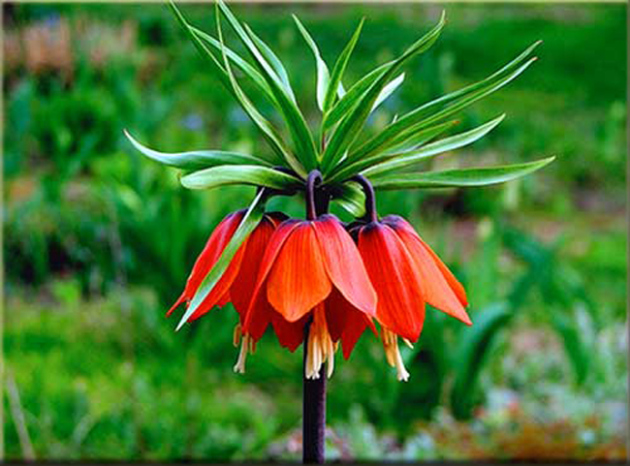
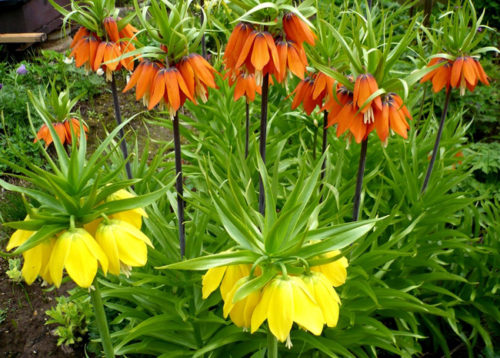
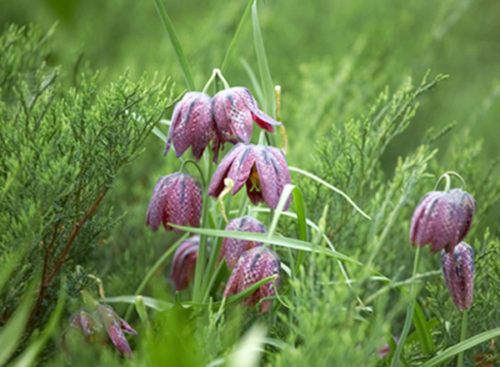
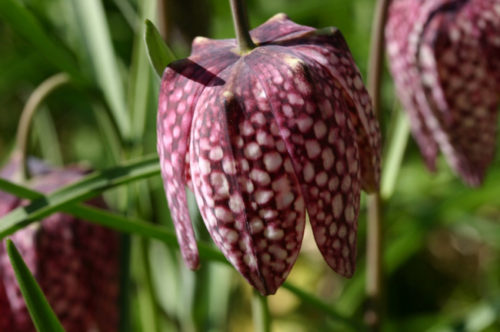
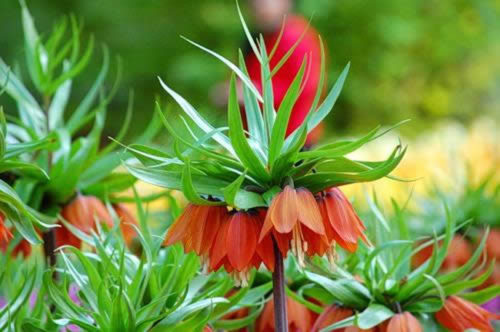
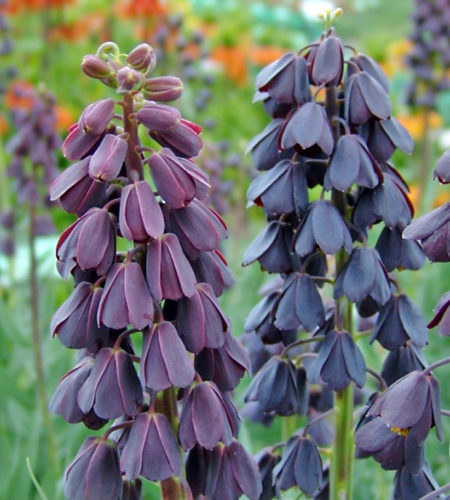
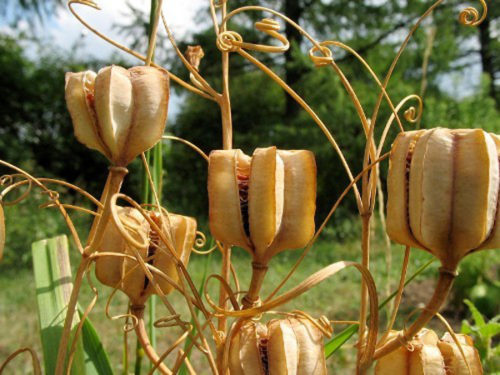
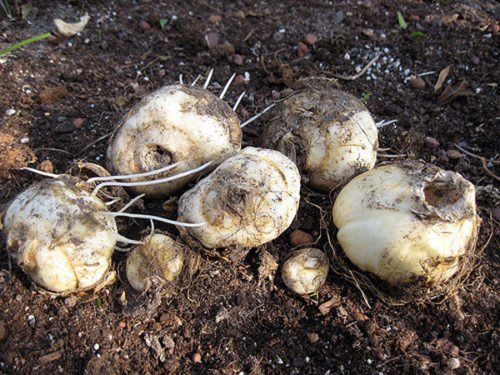
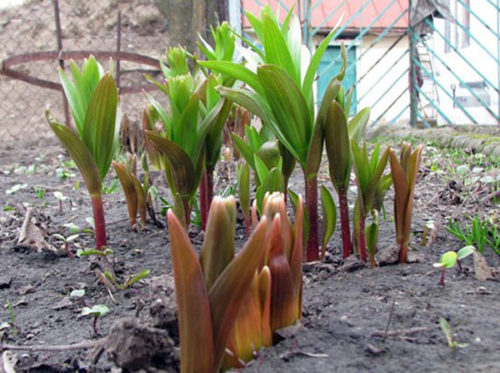
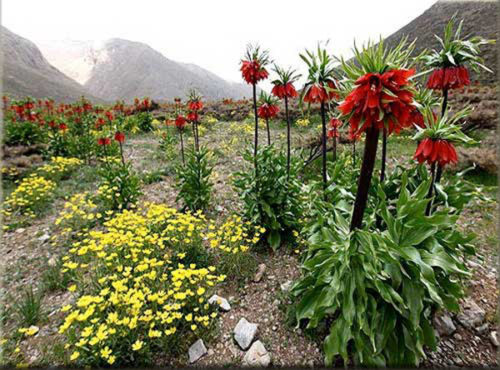
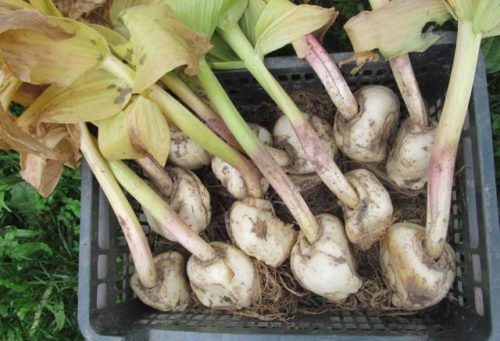
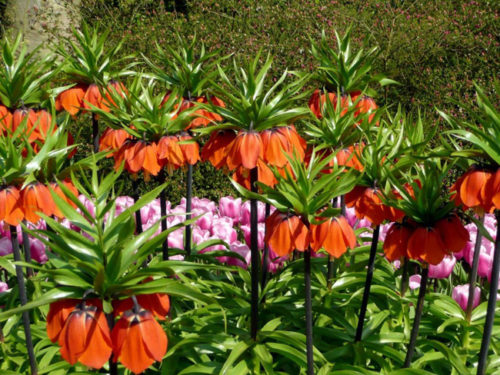
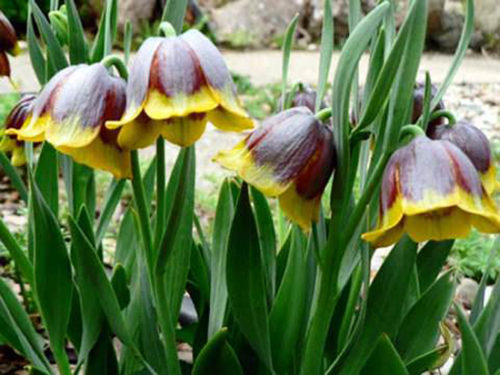
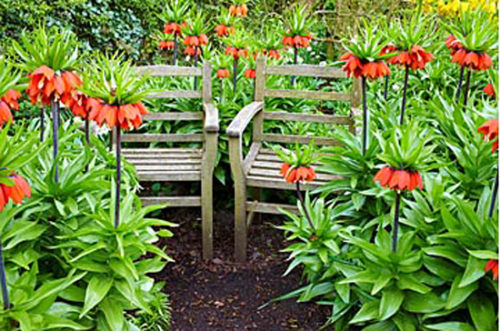
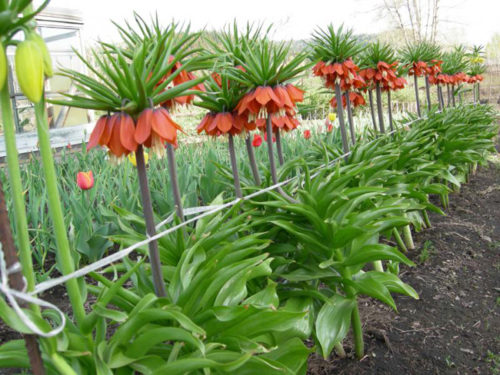












 Start a discussion ...
Start a discussion ...